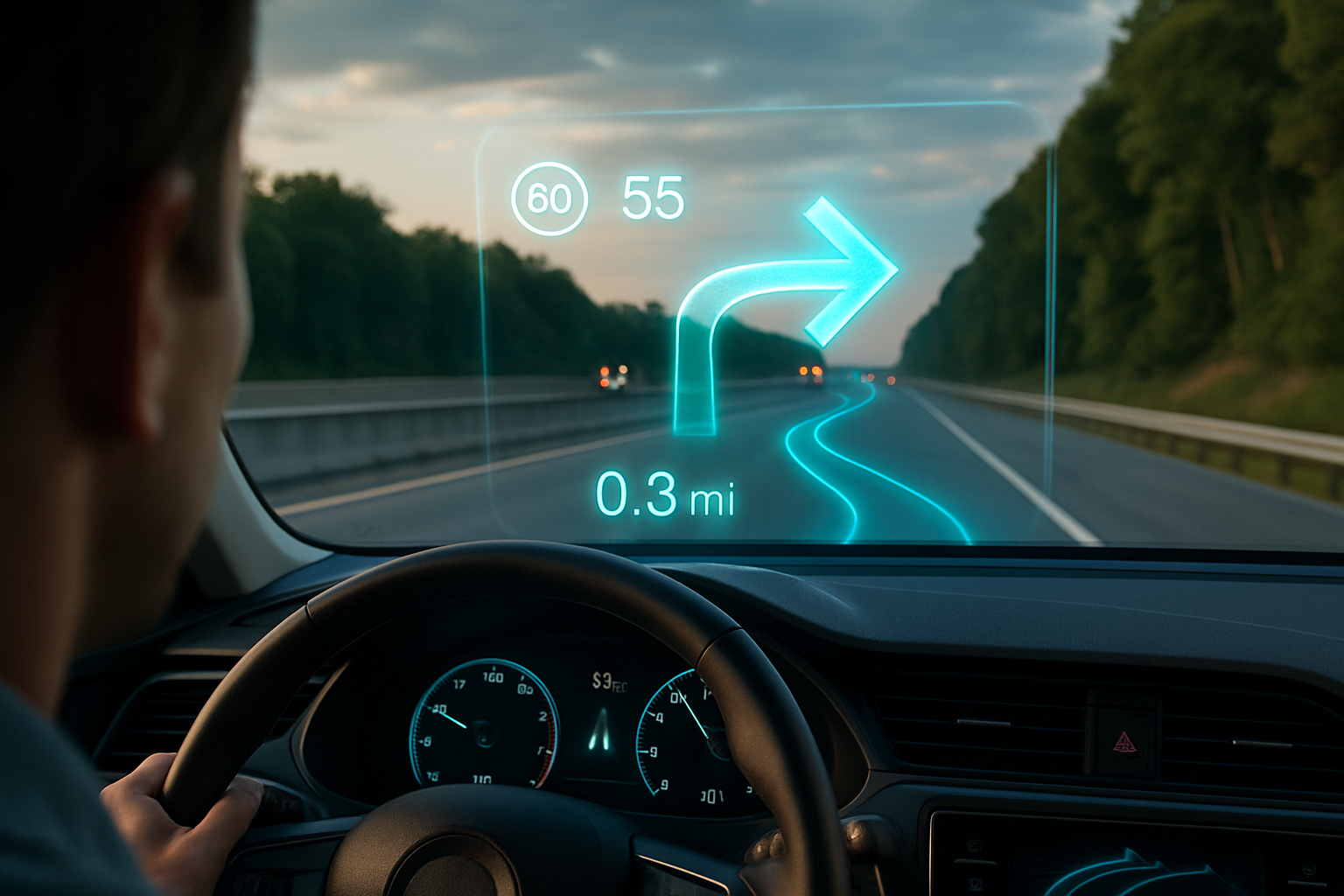Holographic Heads-Up Displays: The Future of Automotive Information
In the ever-evolving world of automotive technology, one innovation stands out as a game-changer for driver information systems: holographic heads-up displays (HUDs). This cutting-edge technology is set to revolutionize how drivers interact with their vehicles, providing an immersive and intuitive interface that enhances safety, convenience, and the overall driving experience. As we delve into the realm of holographic HUDs, we'll explore their potential to transform the automotive landscape and redefine the relationship between driver and machine.

How Holographic HUDs Work
At the heart of holographic HUD technology lies a sophisticated interplay of optics, lasers, and advanced computing. Unlike traditional HUDs that project a flat image onto the windshield, holographic systems create a three-dimensional image that appears to float in space ahead of the vehicle. This is achieved through the use of specially designed holographic optical elements (HOEs) embedded within the windshield glass. These HOEs act as diffractive gratings, bending light in precise ways to create the illusion of depth and dimensionality. High-powered lasers project the image onto these HOEs, which then reflect and diffract the light to form a clear, vibrant hologram visible to the driver.
The Benefits of Holographic Information Display
Holographic HUDs offer a myriad of advantages over traditional display systems. By presenting information in a three-dimensional space, they allow for a more natural and intuitive way of processing data. Drivers can quickly grasp complex information without diverting their attention from the road, as the holographic elements appear to be part of the real world. This enhanced spatial awareness can significantly improve reaction times and decision-making in critical situations. Additionally, the technology allows for a much larger display area compared to conventional HUDs, enabling the presentation of more detailed and diverse information without cluttering the driver’s view.
Augmented Reality Integration
One of the most exciting aspects of holographic HUDs is their potential for seamless integration with augmented reality (AR) systems. By overlaying virtual information onto the real world, these displays can provide drivers with contextual data that enhances their understanding of their surroundings. For instance, navigation instructions can be projected directly onto the road ahead, with virtual arrows indicating turns and highlighting points of interest. Traffic information, potential hazards, and even real-time weather data can be displayed in a way that feels natural and unobtrusive, allowing drivers to make more informed decisions without taking their eyes off the road.
Challenges and Future Developments
While holographic HUDs hold immense promise, their widespread adoption faces several challenges. The technology requires precise calibration and alignment to function correctly, and environmental factors such as bright sunlight can affect visibility. Additionally, the cost of implementing these systems remains high, currently limiting their use to premium vehicle segments. However, as with many automotive technologies, economies of scale and continued research are expected to drive down costs and improve performance over time. Future developments may include eye-tracking systems that adjust the holographic display based on the driver’s viewing angle, as well as integration with vehicle-to-everything (V2X) communication systems for enhanced real-time data display.
The Human-Machine Interface Revolution
Holographic HUDs represent more than just a new way to display information; they signify a fundamental shift in how we interact with our vehicles. As cars become increasingly connected and autonomous, the role of the driver is evolving. Holographic displays have the potential to create a more symbiotic relationship between human and machine, providing an intuitive interface that enhances situational awareness and decision-making. This technology could pave the way for new forms of in-vehicle entertainment and productivity, transforming cars into extensions of our digital lives while maintaining a focus on safety and efficiency.
In conclusion, holographic heads-up displays stand at the forefront of automotive innovation, promising to redefine the driving experience through advanced information presentation. As this technology continues to mature and find its way into more vehicles, it will undoubtedly play a crucial role in shaping the future of automotive design and functionality. The road ahead for holographic HUDs is bright, with the potential to make driving safer, more intuitive, and more enjoyable for generations to come.





